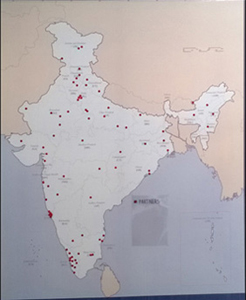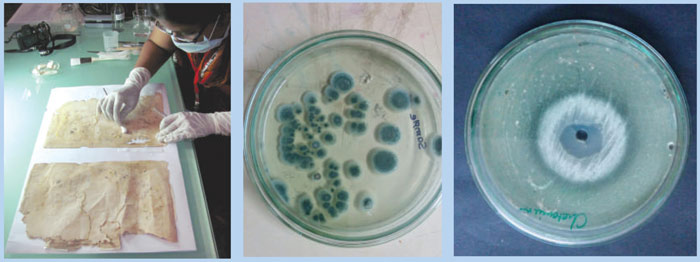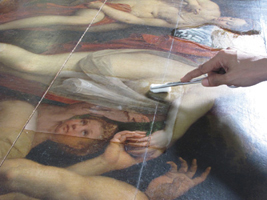Art Conservation Resurgence Project
CSMVS Art Conservation Resurgence Project supported by Sir Dorabji Tata Trust was a three-year long project initiated in February 2012. This project was initiated with the objective of strengthening the existing art conservation movement in the country.
Through a collaborative approach, this project aims to create a seed base of reference documents that would help address outstanding issues in conservation of art in the Indian context and will serve the needs of practicing conservators, custodians of cultural heritage, cultural institutions, scholars, planners and policy makers.
This project helped assess various conservation practices and technologies across the world and evaluate their incorporation in the Indian context. It established an art conservation model for India where conservation, research and training are networked in a practical manner.

The main components of this project consist of Research Projects, Conservation-Restoration, Conservation Training and Dissemination

1. Research Projects are:
1.1 Finding a solution to protect artefacts in India from microbiological attacks
A lot of art works get damaged due to microbiological growth in conditions of high relative humidity. A study on the types of fungal growth and on the methods that can arrest this deterioration is underway. We are collecting microbiological growth samples and culturing them for their characterisation, identification and control.
Collection of sample – maturing phase – eradication phase

1.2. Identification of appropriate solvents to dissolve and remove discoloured varnishes from ancient Indian artifacts
A number of artefacts have varnishes on them which have discoloured over the years. Consequently, these overlying coats often not only damage the paint layers, but alter the visual aspect of the art object. Attempts to remove such varnish without proper knowledge can cause irreversible damage or loss to the paintings. This research project has been initiated to identify the various varnish types, their chemical compositions and the appropriate solvents for cleaning them.
1.3. Removal of bat stains from cultural sites
A lot of stone and wooden monuments, sculptures, murals have been damaged or have deteriorated due to stains that result from colonisation by bats. Research on a solution for the same has been initiated.
1.4 Use of lasers in art conservation in the Indian context for removal of pollution stains on very sensitive surfaces of materials like marble, ivory, wood, metals etc. The laser ablates the pollution deposits from the surface, without harming the object.
1.5 Creation of a database of ancient pigments used in Indian Art
There are a number of pigments used in Indian Art. The main aim is to collect pigments and binder samples from across the country and create a database for these materials, their origin, use and processing methods. A geographic mapping of Indian pigments from varied regions and time periods has been adopted as a method for the same . A reference library was compiled for previous analytical works done with regards to identification and analysis of pigments by various methods.

2. Conservation-restoration
This project component addresses the following object types
- Oil Paintings
- Miniatures
- Manuscripts
- Stone and Terracotta
- Textiles
- Ceramic and Glass
- Metal
- Photographs
- Paintings on Cloth
- Polychrome wood
- Collection Maintenance
The objective is to develop methodologies and protocols of conservation-restoration to resolve various types of issues and define certain protocols and standards that can be referred to by other practitioners and institutes. Specialists in art history, museology, architecture, display, packing, law, health and safety, etc. have been involved in this project.
This component also comprises Material and technology studies to understand how an object is made and the use of raw materials by the artists to create an art object. This material and technology survey is being done keeping in mind its usefulness for conservation practises.

This component also looks into Damage mapping – a directory of damages is being compiled, which will showcase the unique kinds of damages on different types of objects from all over India. Since India has varied climatic zones, they react with the objects and affect them differently. For example, a wooden object in a coastal area may show a different type of damage or react differently than a wooden object in a cold climatic zone. The main aim is to identify the damage, understand how it has occurred and how it should be treated.
Conservation Training
Workshops and technical discussions have been conducted on subjects identified under the project.. This component is linked to the conservation-restoration. The workshops invite professionals to learn new techniques and help in developing methodology of conservation for the various types of artefacts.

Dissemination
By the end of the three year project, through nationwide consultative, practical and capacity building efforts, CSMVS Museum Art Conservation Centre will publish a series of practical handbooks, map material and technology of works of art, create a nationwide directory of damages and compile a good practice volume for students, practitioners and custodians of cultural collections.